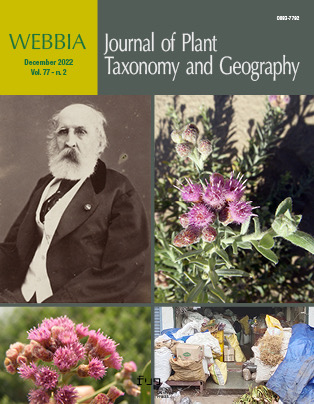Published 2022-12-15
Keywords
- Passifloraceae,
- Passifloroideae,
- Turneroideae,
- plastome,
- floral evolution
- West Africa ...More
How to Cite
Abstract
Jongkindia, a small tree species endemic to a local area in southeast Liberia, is described as a new monotypic genus of Passifloraceae sens. lat. Its only species Jongkindia mulbahii combines floral characteristics of the Turneraceae and fruit characteristics of the Passifloraceae s.s. (or subfamily Passifloroideae in APG) and can therefore be regarded to occupy an isolated morphological position. This is confirmed here by DNA sequence-based phylogenetic analyses including most Passifloracean genera, which places it as sister to Passifloroideae. We delineate 16 morphological characters and their states and optimise them on our reconstructed phylogenetic tree. Based on these results we consider the Passifloraceae fruit characteristics (berries with arilled seeds) as synapomorphic for Passifloroideae. The monotypic Pibiria and Jongkindia are predominantly characterised by autapomorphies. On the other hand, the Adenia/Passiflora clade is characterised by polymorphisms. We place Jongkindia in a new tribe Jongkindieae Breteler & F.T.Bakker. A draft plastome sequence for Jongkindia mulbahii is presented and evidence for two mitome to plastome (mtpt) fragment transfers is discussed. Structurally the Jongkindia plastome appears similar to that of Populus, Adenia, Mitostemma, Dilkea, and Passiflora pittieri, but not to contain the previously-described major inversions within other, more derived, Passiflora plastomes.


